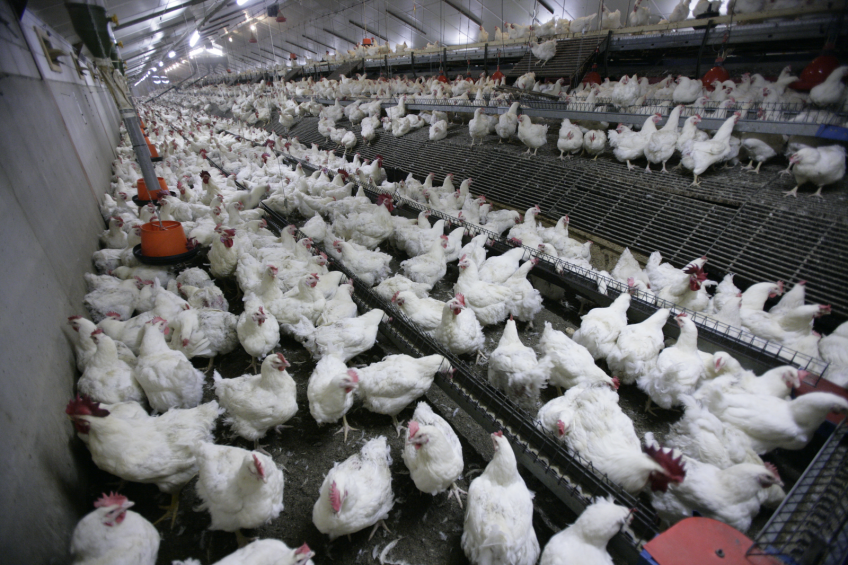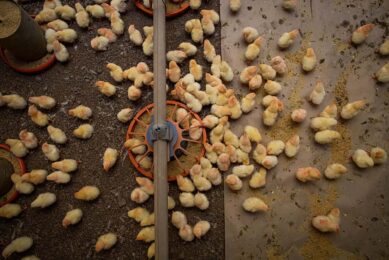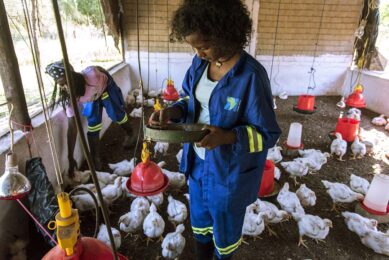Feed additives make the difference in poultry

Preparing poultry rations is not just a case of milling and mixing cereals, inclusion of additives is as important. These can achieve better fertility, maximise performance and if chosen wisely, a good return on investment. This comes from savings on veterinary costs, reducing reliance on antibiotics, and supporting a healthy gut microbiota.
At a time when feed costs are falling but margins are still being squeezed, the question often being asked now is – How can I justify the cost of feed additives? Many people still believe that feed additives are an additional cost to prevent or reduce a problem but, in reality, feed additives do much more than that. Feed additives offer users a significant return on investment in a number of different ways and whilst no-one would suggest you use a wide range of additives, the prudent use of the most appropriate products will reap significant rewards.
Need to reduce antibiotics usage, improve FCR
At the Animal Nutrition 2013 Conference in Brussels, it was concluded that animal production worldwide is limited by many factors, ranging from a need to reduce antibiotic usage, improve growth rates and FCR, and improve microbiological standards at both the slaughter house and the supermarket. At that same conference it was considered that most production animals achieve only 60% of their genetic potential due to sub-optimal conditions and poor health status.
Factors that need to be considered are the occurrence of mycotoxins in feed, we routinely test for 6 or 8 that we understand, there are in fact over 400 mycotoxins and mycotoxin metabolites that may all play significant roles in animal performance that we simply do not understand. We have the technology to find them and it is predicted that many have additive or synergistic effects on animal performance.
Feed mills are at the basis of preparing specific poultry rations.
Occurrence of Salmonella, Escherichia and Campylobacter
Another huge problem area is the occurrence of the recognised pathogens such as Salmonella, Escherichia and Campylobacter, all of which have a direct impact on human health if not always on the animals themselves. In Europe alone EFSA report that there are an estimated 100,000 cases of Salmonella reported each year with an associated economic burden of €3 billion per year.
The cost of bacterial diseases like necrotic enteritis, looked at from a global perspective, is estimated to cost the industry €1.5 billion per year through mortalities, poor performance and the cost of prevention and treatment. In EU countries, the profit of severely NE affected broiler flocks has been estimated to be 33% less than flocks with low level of the disease.
At the same time we keep hearing that there is a requirement to increase animal production by 50% to feed a growing world population which is due to increase from seven billion to nine billion by 2050. However levels of urbanisation will rise from 30% to 50% in the same time frame so there will be fewer people involved in production. Urbanisation is likely to increase meat consumption from 37 to 50kg/head/year and dairy product consumption from 83 to 90kg/head/year. To achieve these goals we need to improve efficiency, control disease and reduce wastage.
Salmonellae – direct effect on growth rates, FCR
So where do feed additives come into play? The digestive system of broilers in particular is under stress. In recent years their performance has improved to such an extent that birds are almost three times heavier than they were 100 years ago and in less than half the time! This however means that the gut has to cope with almost three times the volume of feed per day and this stresses the natural innate immune system.
Simple control of Salmonella at the feed mill with harsh chemicals does little to improve animal performance on farm. Salmonellae have little direct effect on growth rates or feed conversion ratio.
Using hazardous antimicrobials is therefore not the most cost effective answer. Protected acids work with the gut microflora to reduce pathogen challenge, reduce feed buffer capacity and encourage a gut microflora that improves feed conversion and trace mineral bioavailability, providing an excellent return on investment.

Extensive lab testing is an essential part of determining quality and value of the feed ingredients.
Dietary requirements
An important new consideration for feed additives is to zone the additives to be specific for different stages in growth and development. Products should be selected for breeders and layers that not only protect against Salmonella and other pathogens but also promote both intestinal health in broilers and calcium availability in layers. All birds can show increased digestive activity with enzymes, and new style performance boosting products are currently being trialled.
Changing ration formulations especially in layers, has resulted in improved efficiency and cost savings. First you need to consider the dietary requirements of layers. Birds lay an egg within three hours of lights coming on, ovulate 30 minutes later, set albumen in 1-2 hours after that and then shell build for 21 hours.
Broad spectrum binder
Everyone is talking about mycotoxin binders. But what is the best way to use them? Many poultry producers are introducing coarse cereals or even whole cereals into the ration, but these may be a source of mycotoxins. Analysis is known to be woefully inaccurate and targeting specific mycotoxins is impractical.
It is much better to use a broad spectrum binder, but which one? Bentonites bind important treatments such as macrolides and anticoccidials. The recent Commission Regulation (Implementing Regulation (EU) No 1060/2013 of 29 October 2013 concerning the authorisation of bentonite as a feed additive for all animal species) quite clearly states that bentonite products should not be used with macrolide antibiotics or robenidine anticoccidials and should be used with caution with other anticoccidials. This is obviously a massive concern to most poultry farmers.

Tailor-made feed including additives, specifically targets poultry strains like broilers.
With mycotoxins originating both in the standing crop and in storage, there are clearly many mycotoxins to consider. Feed is unlikely to contain just one mycotoxin, but can contain 10 or more, many of which we really do not fully understand.
In a recent survey 99% of all samples contained mycotoxins and 83% contained multiple mycotoxins so trying to target one is of little value. Similarly, as mentioned earlier, targeting all with a single broad spectrum binder can also result in problems if your anticoccidial programme is destroyed.
Storage mycotoxins and field mycotoxins are very different and require different binders. A combination binder used as an insurance against a wide range of mycotoxins is a wise approach, especially as the vast majority of mycotoxins are never identified yet they are known to work synergistically to depress performance.
Source: World Poultry magazine. Volume 30.8 (2014)
Join 31,000+ subscribers
Subscribe to our newsletter to stay updated about all the need-to-know content in the poultry sector, three times a week. Beheer
Beheer








 WP Admin
WP Admin  Bewerk bericht
Bewerk bericht